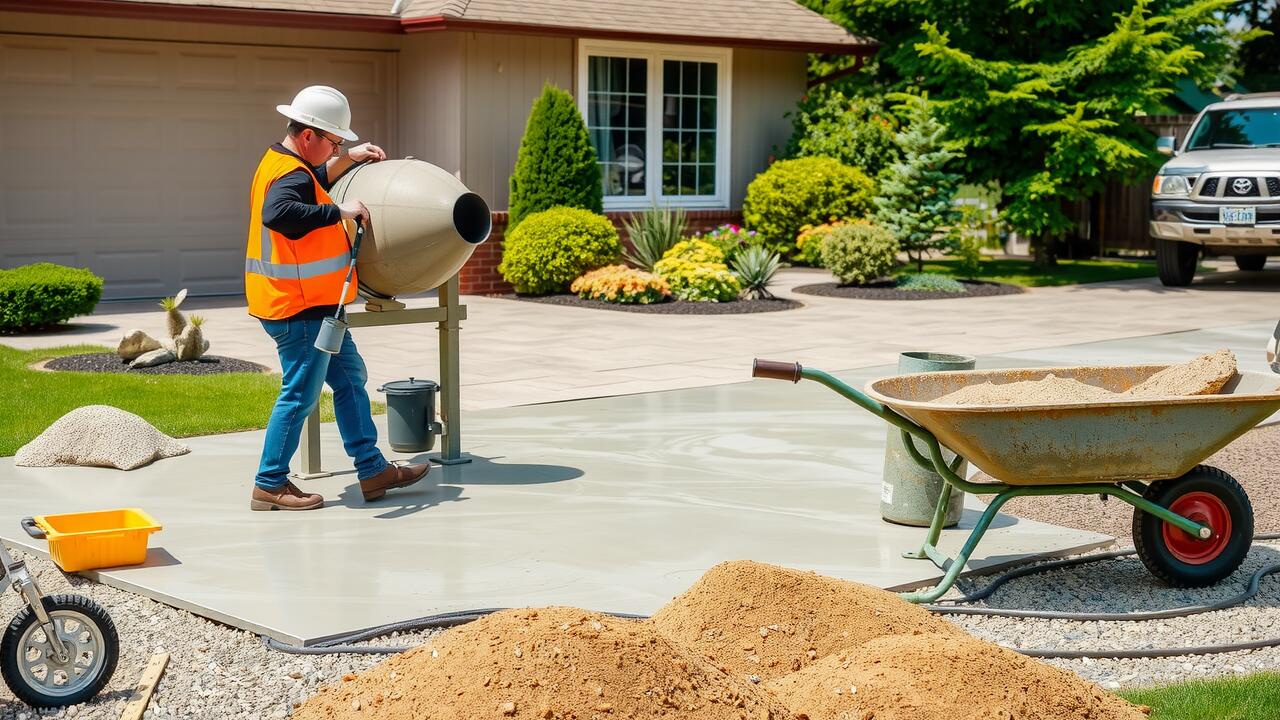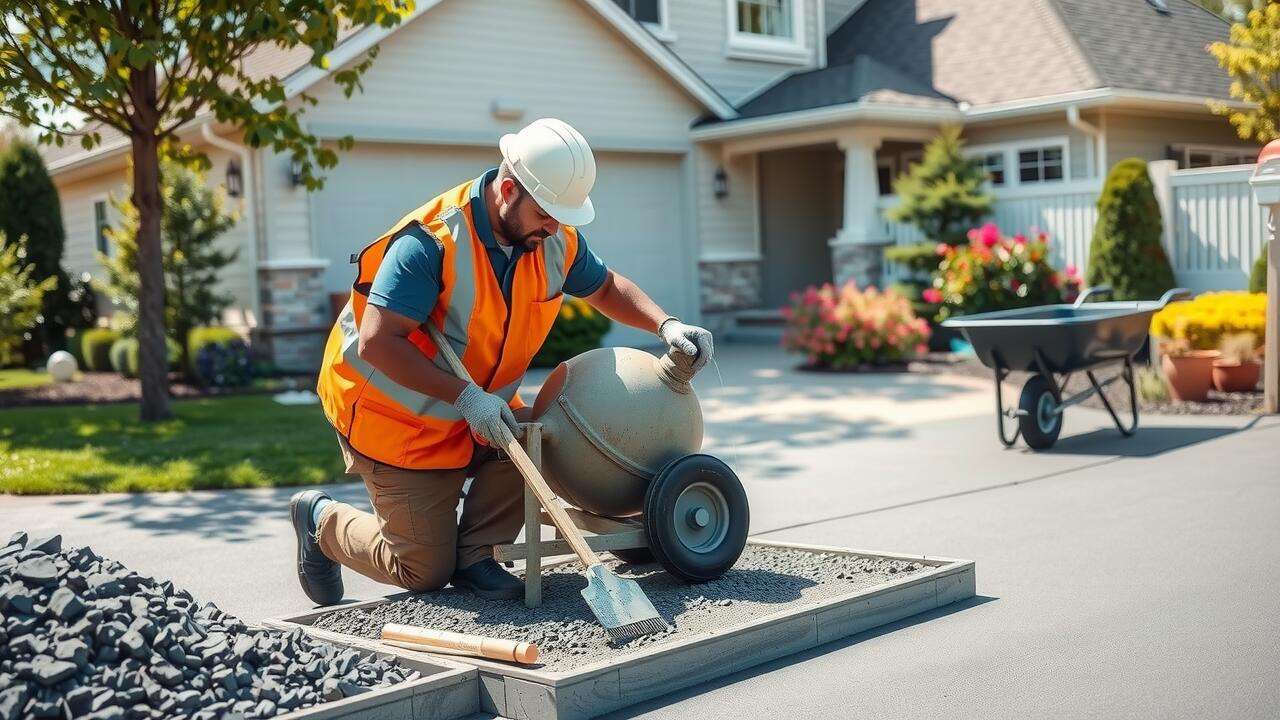
Regional Cost Variations
Regional cost variations significantly impact the overall expense of driveway installation. Prices can differ widely based on geographic location, primarily due to variations in labor costs, materials, and local regulations. In metropolitan areas, where demand for construction services is higher, home and business owners may find that driveway installation costs are elevated. Conversely, rural areas often present lower labor rates and material costs, which can lead to reduced overall prices for similar projects.
The climate and terrain of a region also influence the cost of driveway installation. In areas prone to severe weather conditions, additional measures such as reinforced materials or specialized drainage solutions become necessary, driving up expenses. Local building codes and regulations may further complicate the pricing structure, as homeowners might need to comply with stricter guidelines in certain regions. This variability highlights the importance of obtaining local estimates to accurately gauge the financial implications of driveway installation.
Urban vs. Rural Pricing
Urban areas typically face higher costs for driveway installation. This price increase is often due to greater demand for services, higher labor costs, and the expense associated with obtaining permits in densely populated regions. In cities, limited space may also require specialized equipment for installation, which further drives up the total expense.
In contrast, rural locations often enjoy more competitive pricing for driveway installation. These areas may have lower labor costs and fewer regulations, making it easier for contractors to offer reasonable rates. Additionally, land availability allows for simpler installation processes without the need for complex machinery or logistical considerations, ultimately resulting in a more affordable overall project.
Driveway Size and Layout
The size and layout of a driveway play significant roles in determining overall costs. A standard 100-foot driveway may vary in price depending on its width and the chosen materials. Typically, a wider driveway requires more material, which increases labor and installation costs. Additionally, the layout can impact the complexity of the project. A straight driveway is usually more affordable than one with curves or complicated entry points.
Driveway installation costs also depend on the terrain and site preparation necessary for the project. A level surface is generally less expensive to work on, while a sloped or irregularly shaped lot might require additional grading, thus affecting the total price. If the driveway layout necessitates extensive excavation or the installation of retaining walls, these factors will further influence the final cost.
Impact of Driveway Shape on Cost
The shape of a driveway can significantly influence the overall cost of installation. Straight driveways typically require less material and labor than curved or complex designs. A straightforward layout might also allow for quicker completion, reducing labor costs. In contrast, intricate shapes often necessitate additional planning, grading, and possibly higher-quality materials to achieve the desired aesthetic and functionality. Such complexities can raise both time and financial investment during the construction process.
Furthermore, the driveway’s orientation and its relationship to the home can also affect costs. A shape that requires unique features like retaining walls or additional drainage solutions might increase expenses. Homeowners should consider not just the initial installation costs but also long-term maintenance aspects associated with various shapes. The right design can enhance curb appeal while balancing functionality with budget.
Additional Features and Upgrades
When considering driveway installation, additional features can significantly affect the overall cost. Options such as decorative edging, integrated lighting, or patterns can enhance the aesthetic appeal and functionality of a driveway. Decorative materials like bricks or pavers may also increase expenses, but they offer a custom look that many homeowners desire. Homeowners should weigh the benefits of these upgrades against their budget.
Drainage solutions are another critical aspect of driveway installation that can influence pricing. Proper drainage not only prevents water pooling but also extends the life of the driveway. Implementing features like French drains or grading may add to the initial costs but can save money on repairs over time. Prioritizing effective drainage can ensure the longevity and safety of the driveway, making it a wise investment.
Drainage Solutions
Proper drainage solutions are essential for any driveway installation, especially in areas prone to heavy rainfall or where the soil may retain water. Installing drainage systems can prevent issues such as erosion, pooling water, and structural damage to the driveway. Options include trench drains, surface drains, and French drains, each addressing specific site conditions and water flow patterns. The choice of drainage system impacts the overall cost of the installation, given the labor and materials involved.
Incorporating effective drainage not only enhances the longevity of the driveway but also ensures safety for vehicles and pedestrians. Poor drainage can lead to more significant issues over time, which may require extensive repair or replacement. Homeowners should consider these factors when budgeting for driveway installation. Upfront costs associated with drainage solutions can save money in the long run by mitigating future problems associated with water damage.
FAQS
What is the average cost of a 100 ft driveway?
The average cost of a 100 ft driveway can range from $1,500 to $12,000, depending on materials, location, and additional features.
How do regional variations affect driveway costs?
Regional variations can significantly impact driveway costs, with urban areas typically having higher labor and material costs compared to rural locations.
Does the shape of the driveway influence the overall cost?
Yes, the shape and layout of the driveway can influence the cost, as more complex designs may require additional materials and labor.
Are there additional costs associated with features like drainage?
Yes, incorporating drainage solutions and other upgrades can increase the overall cost of a driveway, potentially adding several hundred to thousands of dollars depending on the complexity.
Can I reduce the cost of my driveway installation?
Yes, you can reduce costs by choosing more affordable materials, simplifying the design, or opting for a DIY installation if you have the necessary skills.
